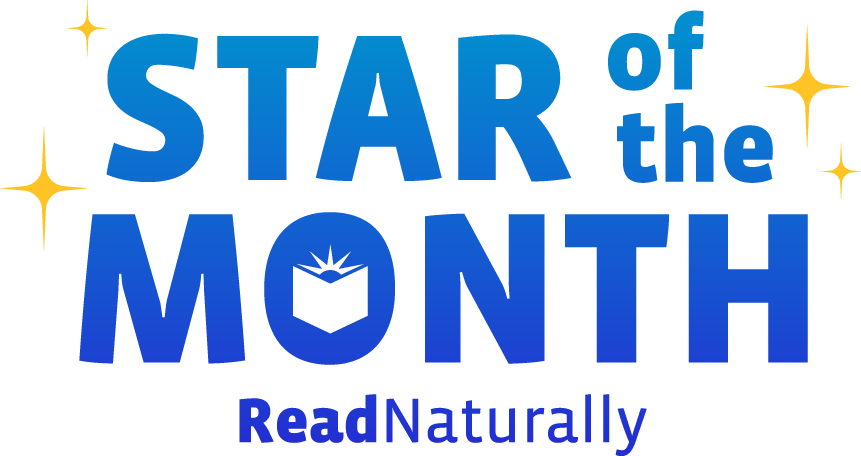At Read Naturally, we believe all educators should have access to free, high-quality training in our programs—and in reading instruction in general. This is why we offer several free webinars every year, covering a range of topics from fluency research to specific program tips. Educators are invited to be live participants at these webinars as they occur; otherwise, recordings can be accessed anytime in the Knowledgebase section of our website.
Read more Winter break is a couple days away. It’s almost time to celebrate! Before you release your students to make mischief, merriment and hopefully lots of hot chocolate, we urge you to ask them just one question: “Who will read with you over break?”
Read more Research tells us that in order to become fluent, students need to learn to decode unknown words accurately and automatically. An understanding of phonics is what makes this possible. Earlier this year, we explained how our QPS diagnostic phonics assessment can quickly and easily alert you to students who need additional phonics support. Last month, we highlighted our popular GATE for phonics program, which is an ideal phonics intervention for small groups of early readers. But what if you’re looking for a phonics intervention that students of all ages can use mostly independently?
Read more An American Public Media documentary that went viral last year makes the strong argument that better phonics instruction will greatly improve our nation’s literacy statistics. According to the report, entitled, Hard Words: Why aren’t kids being taught to read?: “[A] big takeaway from decades of scientific research is that, while we use our eyes to read, the starting point for reading is sound. What a child must do to become a reader is to figure out how the words she hears and knows how to say connect to the letters on the page. Writing is a code humans invented to represent speech sounds. Kids have to crack that code to become readers.” In order to crack the code, children need to learn how letters represent speech sounds. In other words, they need to understand phonics.
Read more If your students have been properly trained in the Read Naturally program, and if you’ve checked their initial placement (Encore or Read Naturally Live), you’re now entering the sweet spot of a Read Naturally intervention. This is when your students’ progress and confidence will really start to soar. You now have the important task of monitoring their performance to accelerate learning.
Read more It is a remarkable thing to witness students improving in their reading fluency. Sometimes you can hear the difference from one day to the next. Students can hear the difference in their own voices too. More importantly, they can feel it—and it’s this feeling of confidence that motivates them to work even harder. The purpose of a Read Naturally intervention is for students to make as much fluency growth as possible from day to day, week to week, month to month. As an educator, how can you support and maximize this growth?
Read more Are your Read Naturally students working in the correct level? And do they have an appropriate goal? Every year around this time, we like to remind teachers of the importance of checking their students’ initial Read Naturally placement. A Read Naturally student will make optimal progress in the program when he or she works in the appropriate level of reading material and has an appropriate words-correct-per-minute goal. Our detailed checking initial placement process will help you verify whether the level and goal you initially set for the student is the right fit or whether you need to make adjustments.
Read more If you’ve identified the need for a Read Naturally intervention, you’re probably eager for your students to begin working in the program as soon as possible. You may have a hunch about which Read Naturally level is right for your student, and you likely have assessment data to support this hunch. Is this enough information to pick a Read Naturally level and bypass the official placement process, in the interest of saving a little time?
Read more You’ve reached that point in September when the school year no longer feels quite so new. Students are settling into routines, patterns are emerging, and everyone is feeling a bit more comfortable. By this point, many educators have already identified or are in the process of identifying which students need additional reading support. It’s the perfect time of year to familiarize yourself and your students with Read Naturally Live—the most effective online tool to help your students crush their reading goals this year.
Read more We’ve reached the time of year when many parents are filling up their summer calendars, making plans to keep their children’s minds and bodies busy. We at Read Naturally believe reading is the most important activity children should be engaged in this summer. Quiet time to read might not earn a spot on the family calendar, but it should be highly prioritized nonetheless.
Read more  Share your student’s success story—nominate him or her for our Star of the Month award. Win a Barnes & Noble gift card for the student and a Read Naturally gift certificate for your class!
Share your student’s success story—nominate him or her for our Star of the Month award. Win a Barnes & Noble gift card for the student and a Read Naturally gift certificate for your class!